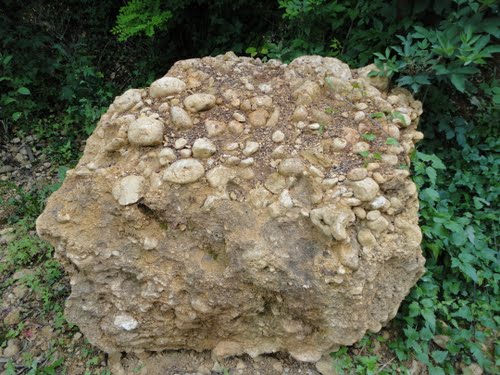 |
| Gold in Quartz Photo by Rob Lavinsky |
Unlike placer gold hard rock or lode gold is much more expensive
to locate, but under the right conditions isn’t impossible. Most lode deposits are found by following
placer gold deposits in a stream until the deposit suddenly chokes off then
following float up hill until you finally find the Mother Lode. Most lode deposits are always shedding float
that goes downhill in an ever widening fan of the host rock.
Although gold can be found in virtually any rock type its
usual home is in white, milky quartz that is readily distinguished from the host
rock as termed in the mining industry “gangue.” The white rock stands out so often pieces of
it can be observed washing down mountainsides from its source with the naked
eye or by using binoculars.
Although most hard rock gold is found in quartz veins that
are usually readily visible, and the thinner the vein often the more gold it
contains. Another prime target for hard
rock gold is the rock conglomerate
where the biggest of all gold deposits are found in the Witwatersrand
in South Africa . These deposits have produced around 40% of
all the gold that has ever been mined.
Deposits of this type also contain uranium and rare earth elements in
payable amounts making it entirely possible to find deposits of this nature
with a Geiger counter. The gold/uranium
deposits at Elliot Lake,
Ontario are of this nature.
 |
| Quartz pebble conglomerate a likely place to find gold Photo by Wiki-Schack |
In many parts of the world it is extremely hard to see float
because the area is covered with deep overburden so it is
necessary to use other methods of finding hard rock gold; one of the most
popular is using aeromagnetic maps or other geophysical methods like ground
resistivity. Aeromagnetic maps
work on the principle that gold often occurs associated with the mineral magnetite or other iron
bearing minerals like ilmenite
causing the prospector to carefully examine the area around magnetic highs on
an aeromagnetic map.
 |
| An analog multimeter that can be used for several different parameters in geophysical prospecting Photo by KENPAI |
Ground
resistivity is one of many different geophysical techniques use to find ore
deposits based upon the amount of underground corrosion that takes place in an
orebody. This is done using a multimeter that has high
impedance and a strand of wire. For
convenience most of these rigs have 1,000 feet of wire mounted on a reel. In use an area 1,000’ x 1,000’ is measured
out on the land. Parallel lines are
drawn on its surface with readings taken from 100 feet apart to 10 feet apart
along the lines. The highest readings
are connected with a line, and each successive lower reading until a map that
resembles a topographic map is generated.
Any number of different parameters can be measured using
this method, but the best explanation of their use is explained in a book about
practical geophysics. Parasinis
authored a book on the subject that is still available today in the 1960s.

Great tips. I would love to try your suggestions. Gold is always interesting to find.
ReplyDeletecash for gold Fresno
If I lived in Fresno I'd be out in the foothills so fast it would take a week for my shadow to catch-up with me!
ReplyDeleteI truly like to reading your post. Thank you so much for taking the time to share such a nice information.
ReplyDeleteGeiger Counter
Bullion Exchanges is a trusted Precious Metals Shop located in New York City's Diamond District.
ReplyDeleteThey have a wide inventory of items like, bullion that range from the gold and silver to the newly emerging platinum and palladium.
They are offering an enormous selection of products appealing to 1st time shoppers and the seasoned investors.
This blog is nice and very informative. I like this blog.
ReplyDeleteblog Please keep it up.